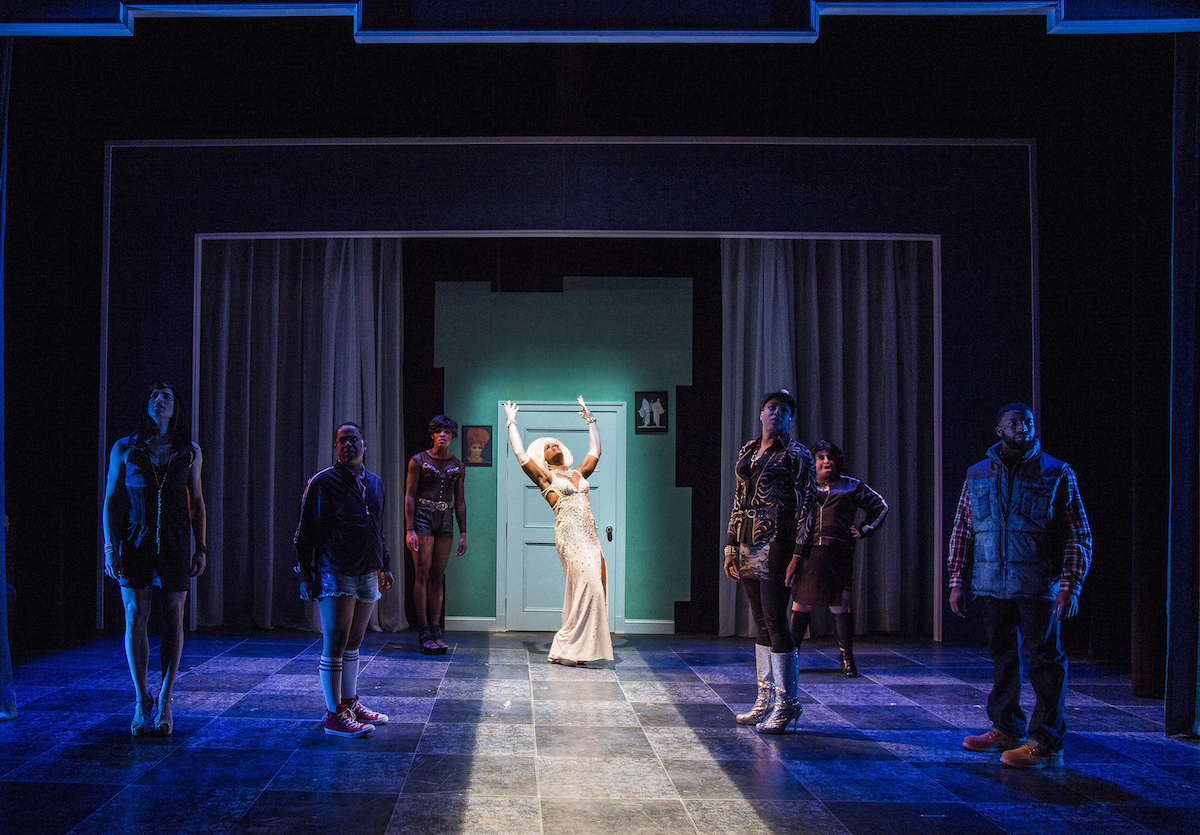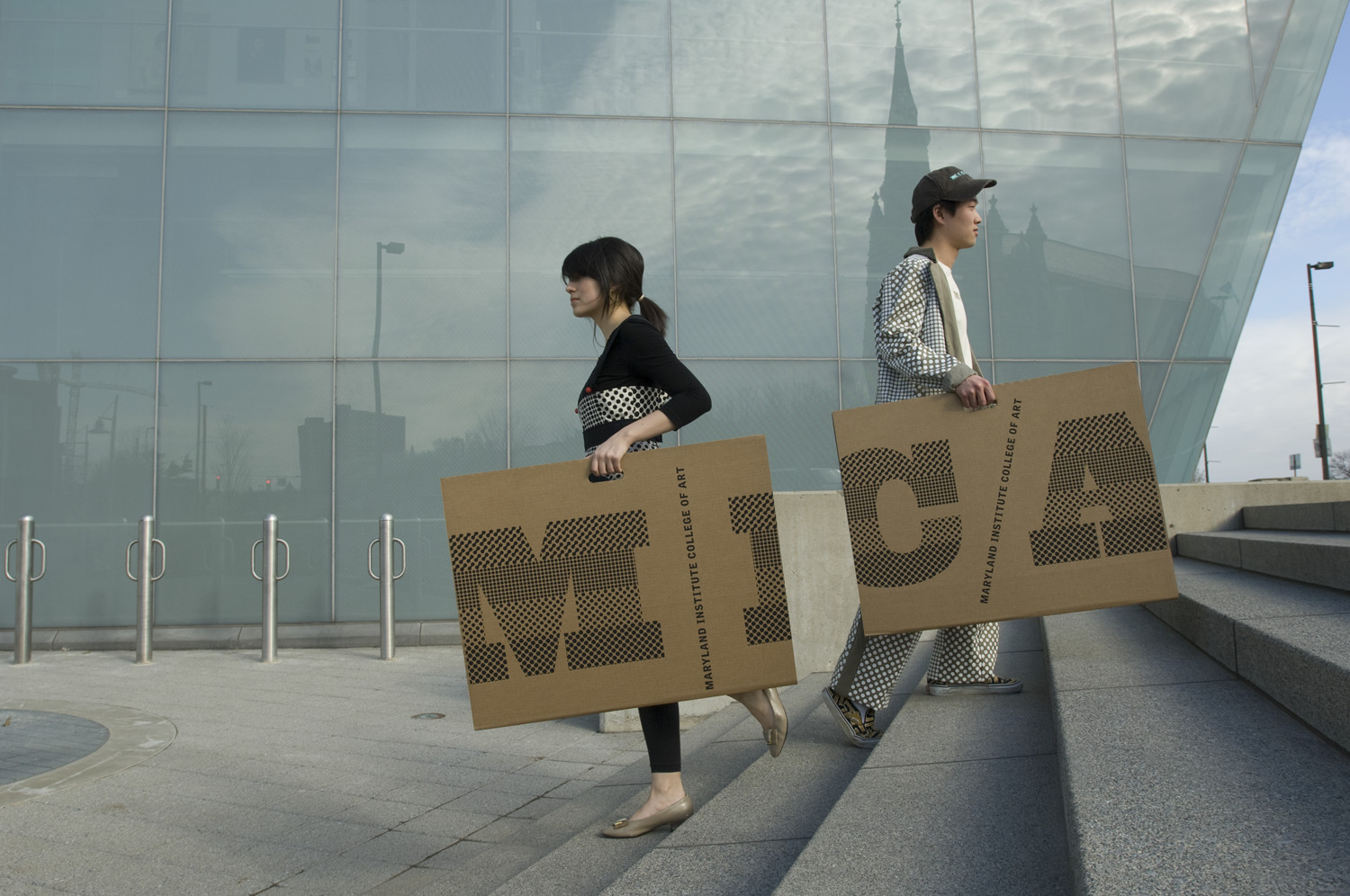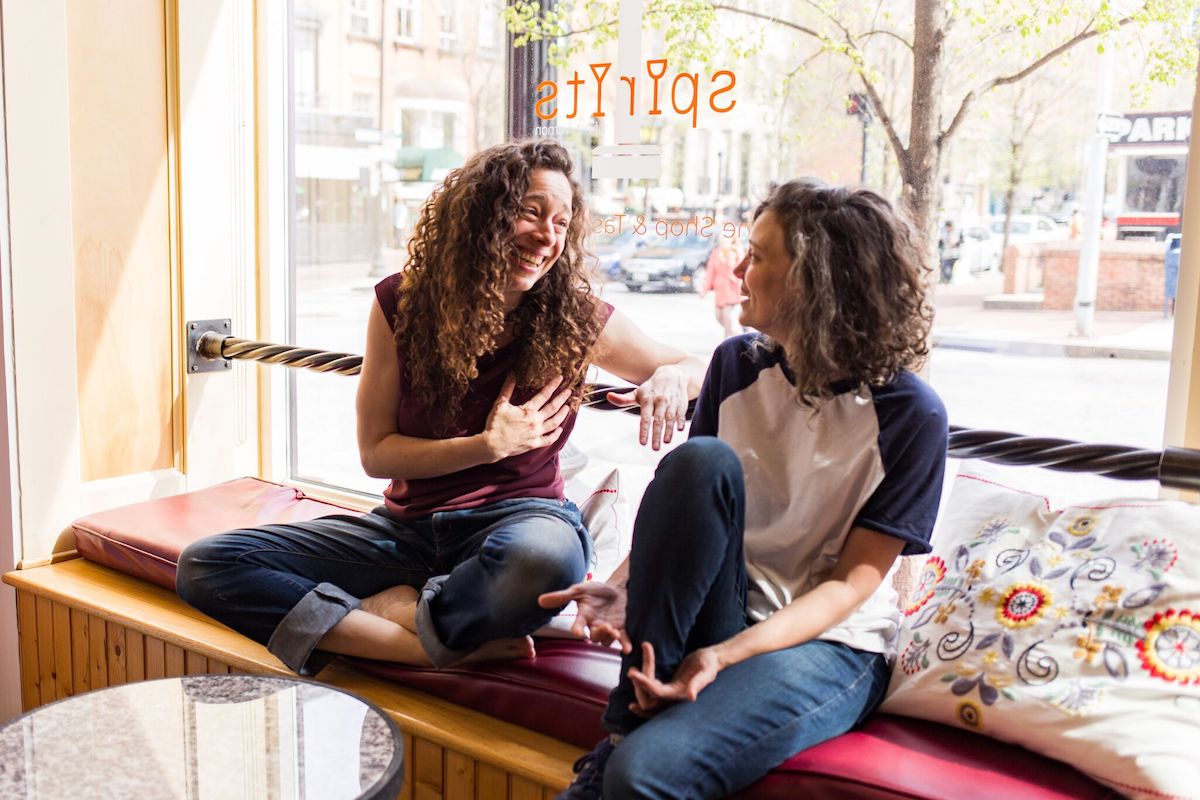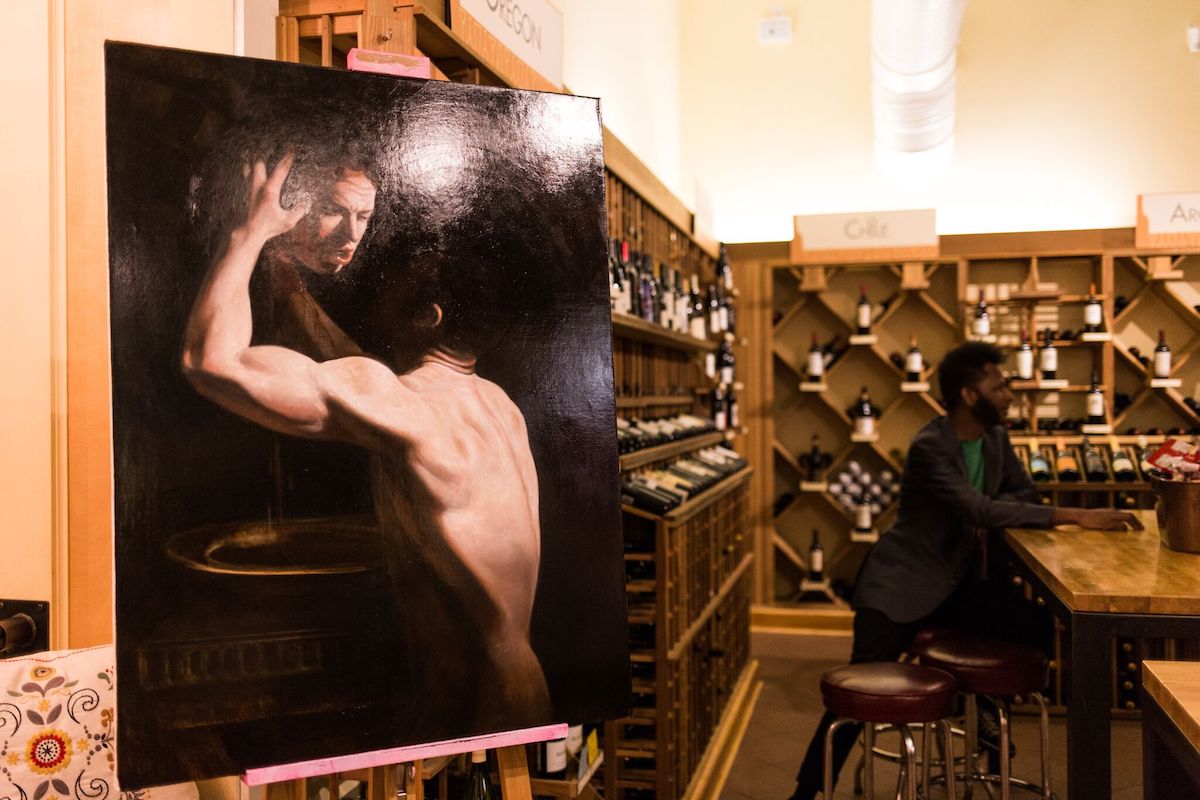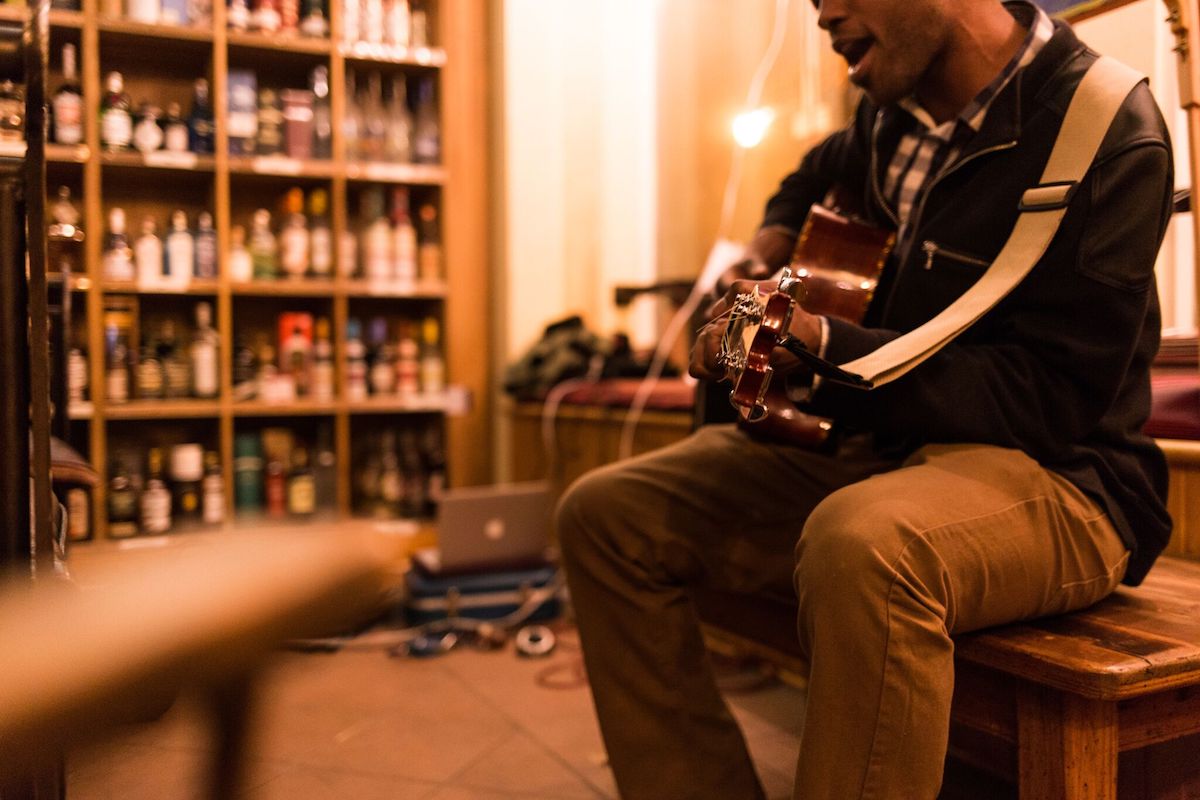The Amplified Cactus Art, Music, and Performance Series Builds a Community by Kelsey Marden
An intimate audience, faintly chattering with wine glasses in hands, quieted at the sound of a cactus being played over an amplifier. And yes, you read that correctly: I said playing a cactus.
This was the scene of the Amplified Cactus event on Thursday, March 9—the fourth in a series of six—at Spirits of Mt. Vernon. The prompt-based performance series always starts the evening with this odd musical plant presentation, making each guest wonder what could possibly be in store for them next.
A brief moment of silence echoed before pianist Aaron Thacker, a Peabody Conservatory grad, began the night’s journey. Framed by wooden shelves and wine bottles, Thacker played a haunting melody paired with the vocals of a seasoned opera singer.


It only took that first key to engage the audience and set the bar for the remaining talent yet to have performed that night.
Some may find a wine shop to be an odd venue for an art performance event, and they’re right.
The organizers of Amplified Cactus wanted the series to engage the community in an atmosphere that wasn’t typical for the average gallery-goer. Their priority was finding a place where no one could claim domain. They wanted a place where not a single artist could walk in and say, “I’ve performed here before,” or “I attended so and so’s art exhibit here.” They wanted a venue that created an intimate, engaging experience, yet was slightly uncomfortable in an out-of-the-norm setting for a performer and attendee.
That’s how they landed on Spirits of Mt. Vernon.
Spirits is a small wine shop located at the corner of Read and Charles in the artistically-known neighborhood of Baltimore. Vicki Schassler, who has been running Spirits of Mt. Vernon for 13 years, refers to her wine shop as the hub of the neighborhood. People don’t just stop in to purchase wine or the many boutique spirits she carries. Instead, they frequent the store to catch up with Schassler and say hello to her French Mastiff, Bear.

So when one of the original organizers suggested to Schassler the idea of hosting Amplified Cactus, she was happy to have them call Spirits of Mt. Vernon home. “I thought this would be a great way to further integrate myself and the business in the community. Amplified Cactus has been a wonderful segway for Spirits to get more involved with the art world.”
Although not an artist herself, Schassler appreciates the arts and was thankful to be able to bring the Amplified Cactus community into her store. “We are so infused with local talent. We’ve got the Peabody Music Institute, we’ve got MICA… we are surrounded by world-class artists and performers. Some of the best in the world, and they’re right here in Mount Vernon. So it’s nice… I can do my little part to be a part of the arts community.”
The roots of Amplified Cactus can be traced back to Maya Alexandri, a local author with an infectious passion for art. Alexandri reached out to fellow Baltimore artists Kate Wyer, Katie Feilds, and Peter Dayton about bringing together creative circles of the city for a series that doesn’t just expose the surrounding community to various art forms in one night, but forces attendees to step outside their normal art ventures and digest what they’ve heard and seen in a completely new way.
One of the qualities of Amplified Cactus that most of the artists and attendees have appreciated is its diversity: it’s not just a reading. It’s not just a concert. It’s not just an art exhibit. It’s all of these things wrapped into one event.
“You’re not just going to a show where people are singing or you’re not just going to a show where people are presenting their art on canvas… You’re going to hear the art, you’re going to see the art, you’re going to experience the art in so many different venues with such diverse talent,” Schassler said.

Amplified Cactus brings all of the creative circles into one room once a month. And the series has a powerful ability to bond the arts together in a way that hasn’t been done before in Baltimore. “I hope that folks who participate in and attend Amplified Cactus begin to see how easy and fulfilling it can be to blend the arts and writing communities in Baltimore. It’s so easy to stick with your own people, but it’s limiting,” Amplified Cactus artist Jenny O’Grady said. “I hope this inspires others to create new opportunities along the same lines.”
The event is also unique in its accessibility to the surrounding neighborhoods of Baltimore. The space is donated, there are no tickets sold at the door, and the artists are doing this on their own accord. This means a free event to the public, and an opportunity to take part in a new art experiment, something that requires a little more courage and certainty when money is involved.
Amplified Cactus may cause some head scratching due to the name—and also possibly from thoughts of prickly things—but the name is more strategic than it may sound.
“You’re going to hear the art, you’re going to see the art, you’re going to experience the art.”
In early meetings, Dayton shared his inspiration for a name idea: composer John Cage’s “Child of Tree” that involves using plants as musical instruments, including the plant Feilds played to signify the start of the next performance: a cactus.
The name stuck. Not only were they thrilled about the cool sound of the two words together, but they also found a metaphorical meaning that dives much deeper than the prickly surface.
Cacti are known for their protective barriers that wound any who touch. We think of these plants as painful, spiteful creatures, out to maliciously harm us without any motive. But what many are unaware of is that on the inside, they’re soft and vulnerable, protecting something very precious to them much like how we tend to protect what’s soft and vulnerable in us. This is the deeper root of the name behind the event.
“This tension between being defended and hurtful on contact and also needing attention and love, that tension struck me as profoundly human,” Alexandri said.
“Amplified Cactus” highlights the need as humans to set up prickly barriers to keep the outside world from disfiguring one’s true self, yet these barriers are also the walls that keep the outside world from the beauty that could be offered.
“For me, Amplified Cactus speaks to that, that part of me… I mean, I’m still a growing being. I’m a cactus… maybe I’ve got like a soft inside, but there’s a lot to me that I’m like keeping people at a distance and I do that in a lot of different ways. But I can also think of it as these are the very things that people could potentially find beautiful about me, or maybe it is resounding out in the world even if I don’t know that’s what’s happening” Feilds said.
Reflecting on this metaphor, Alexandri came up with six questions surrounding the survival techniques of the cactus in its typically brutal environment. These six questions became the prompts used for each Amplified Cactus event, and the artwork produced is emotionally raw and relatable.
With each prompt, artists are essentially asked to compare their own defense mechanisms to a cactus’s. Prompts such as “Can I defend myself without hurting others?” “Is brutality good for me?” “Can I thrive in a pathological environment?” and “Can I be in balance with my ecosystem and not be lonely?” require artists to reveal their own barriers that they use to protect themselves through musical composition, poetry, short-story characters, and visual art.
As attendees wandered from station to station the night of March’s event “Why Am I Attracted to Stimuli That Destabilizes Me?” Nathanael Absher’s oil painting “Jokanaan” stands out in its easel by a window, lingering even after you turn away from it. A man, exposed and vulnerable in his mere nakedness, is tightly grasping a lifeless head in the shadows, holding it with tense muscles as if hoping to bring it back to life. The man’s face is in the shadows, yet light is shed on the lifeless head, an image in and of itself that is haunting. The piece is inspired by Oscar Wilde’s play Salome that ends with a deadly kiss.
Absher doesn’t just sympathize with the man in the painting. To him, he is the man.
The painting encompasses Absher’s own personal experiences. Painting himself as both the man and the dead head, the painting is about his contemplation of his own self destruction, being seductively drawn to damaging acts and the struggles of making the same mistakes over and over again with complete awareness of what it’s costing him. Absher casts the cactus into the painting using powerful symbolism: the deadly kiss being tied to the poke of a cactus.
Where Absher painted a more somber picture from the prompt, O’Grady interpreted the prompt in a lighthearted way for her performance “Three Studies.” Using relatable, yet embarrassing habits that we all take part in such as looking up “past people” on Facebook—making us feel gross and shameful after the fact—further showcased the diversity of the artists by bringing laughter and liveliness into the room.
According to Alexandri, the event is run on the artists’ labor of devotion. These writers, musicians, poets, and painters work hard: the turnaround is short, coordinating schedules is tough, and it’s emotionally exhausting at times. They’re not getting paid for their work and commitment either. Each artist has offered up a piece of themselves along with their art because they believe in the purpose of Amplified Cactus. And they do it with joy and passion.

They also haven’t quit their day jobs. Feilds holds several part-time jobs to pursue what she loves on the side. Wyer works for a non-profit within the public mental health system. Doyle is a Baltimore City Police officer. Alexandri has held a variety of careers ranging from lawyer to EMT and now aspires to be a doctor.
They’re people that you could find working in an office across the street or at your favorite local restaurant, and several of them coincidentally live right in the heart of Mount Vernon mere blocks from Schassler’s shop.
Alexandri’s labor of love fell into the recruitment process along with providing artists with the care and attention they need. Operating on a support-oriented, no-judgement mentality where anyone is allowed and welcome to perform at Amplified Cactus, some of the artists lacked the confidence that Alexandri made up for with her belief in their talent.
“She reached out to me with that amazing force-of-nature personality of hers, and later invited me to Amplified Cactus. I was struck that she saw something in my work and in me that made her want to connect me with the project. From the start, I was intrigued,” Doyle-Gillespie said.
In one case, after many unanswered calls and texts, Alexandri actually showed up at one of the artist’s work in order to recruit him. Why? Because she saw something worth sharing with the Baltimore art community that he didn’t. The artist hadn’t produced work in a year; now, he’ll have produced six pieces in the span of eight months.
He wasn’t the only one showing an impressive output of work. “In this calendar year, I’ve completed a novel, a cycle of six short stories, and three other short stories, I mean that’s like a bizarrely incredible output,” Alexandri said. “There’s a lot of artists out there who don’t have a structure or a community… it’s easy to lose momentum. So one of the things that Amplified Cactus has done has created a vehicle for momentum for a number of people… including myself.”
And it’s working.
Doyle-Gillespie published a collection of poems “On the Later Addition of Sancho Panza” right in the midst of the event series. A moonlight writer and daytime cop, he has always been passionate about writing, but needed that vehicle of momentum to get his writing career going. A man who has tirelessly written in the back of police vans to stay in touch with his writing side, Doyle has remained determined when it comes to donating his work to Amplified Cactus.
During the Anti-Trump protests back in the fall, Doyle was called into work on Thursday, November 10, to police the protests. He was supposed to be reading his poem that evening for the Amplified Cactus prompt “Can I Thrive in a Pathological Environment.” Instead, he handed over his work to Feilds, who went on to read his poem in his place. Once the last performance ended and the artists together stood up at the front to receive their applause, hundreds of protesters marched past Spirits of Mt. Vernon. Vicky swung open the doors while everyone poured out into the streets shouting “Can we thrive in a pathological environment?”

Throughout the night on Thursday, March 9, passersby trickled into the shop and joined the small audience, eyes glimmering with curiosity, further accentuating that this event is one with the community. At the last station, Jeremy Mandel and Maggie Wilkinson played their soundscape “Inside/Outside,” a piece intended to draw listeners away from their world of security and test how attached they are. The piece entails a variety of noises that mixed together sound unearthly: the resemblance of a timer going off, a door creaking, a skipping disc, and rattling chains tied together with a slow-techno vibe.
After the last note faded away, Alexandri invited all the artists to the front, and offered her applause along with the rest of the room through laughter and cheers.
As today’s urban scenes are peppered with people caught up in the alternate world of cell-phones and social media—protective barriers in and of themselves—this event highlights something much simpler, yet essential to survive in our own brutal environment: community.
Amplified Cactus brings out a softer side of Baltimore that’s nice to see.
“Amplified Cactus… is a chance to reconnect… this is a sense of meaningful community where we can come and have a sense of having participated in something out of the ordinary,” Alexandri said.
A meaningful community where artists are pushed to expand in their work and person, and hone their protective barriers to reveal something much more beautiful. In other words, an amplified cactus.

*******
The next Amplified Cactus performance is Thursday, 11 May, 2017.

